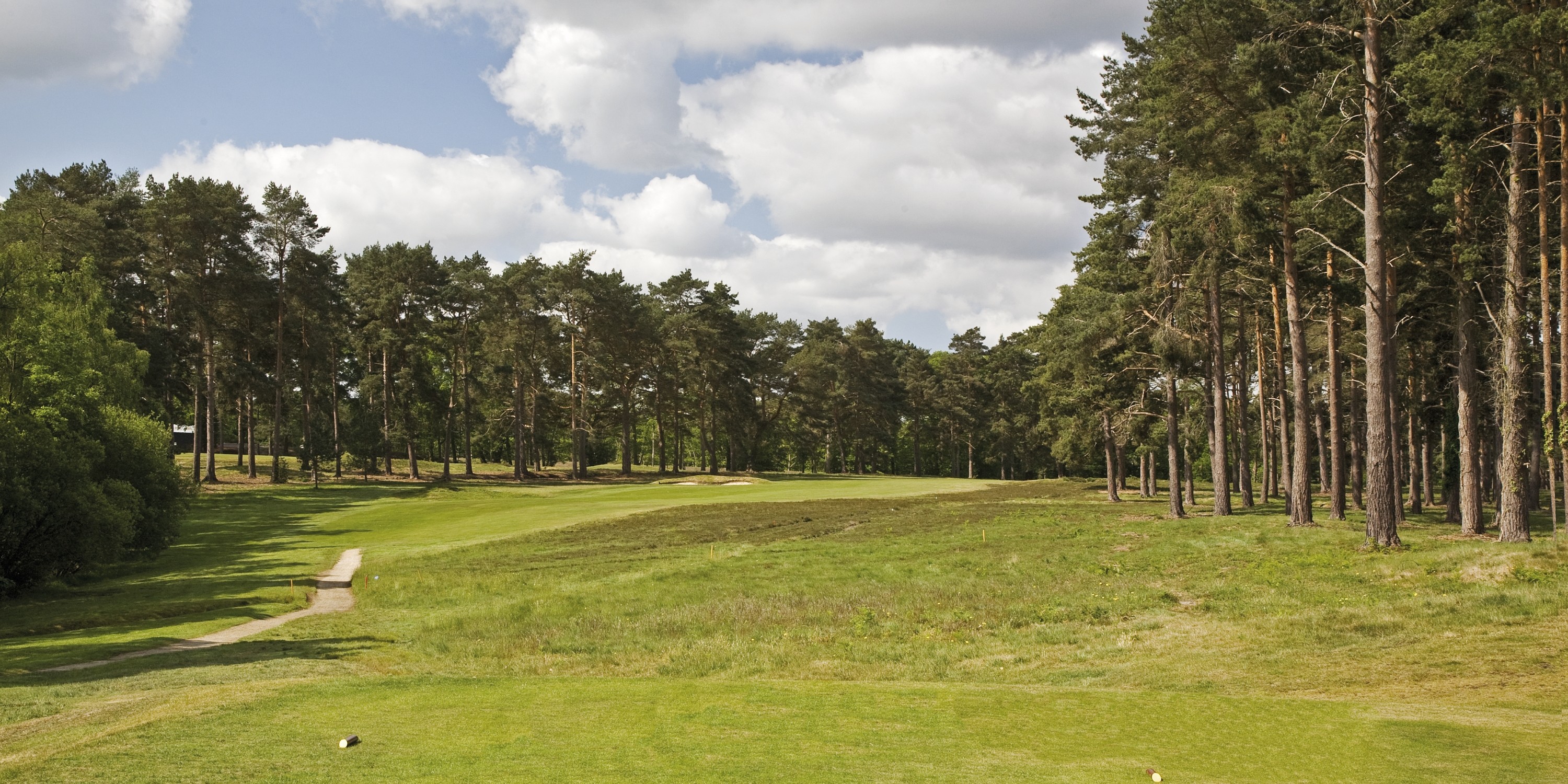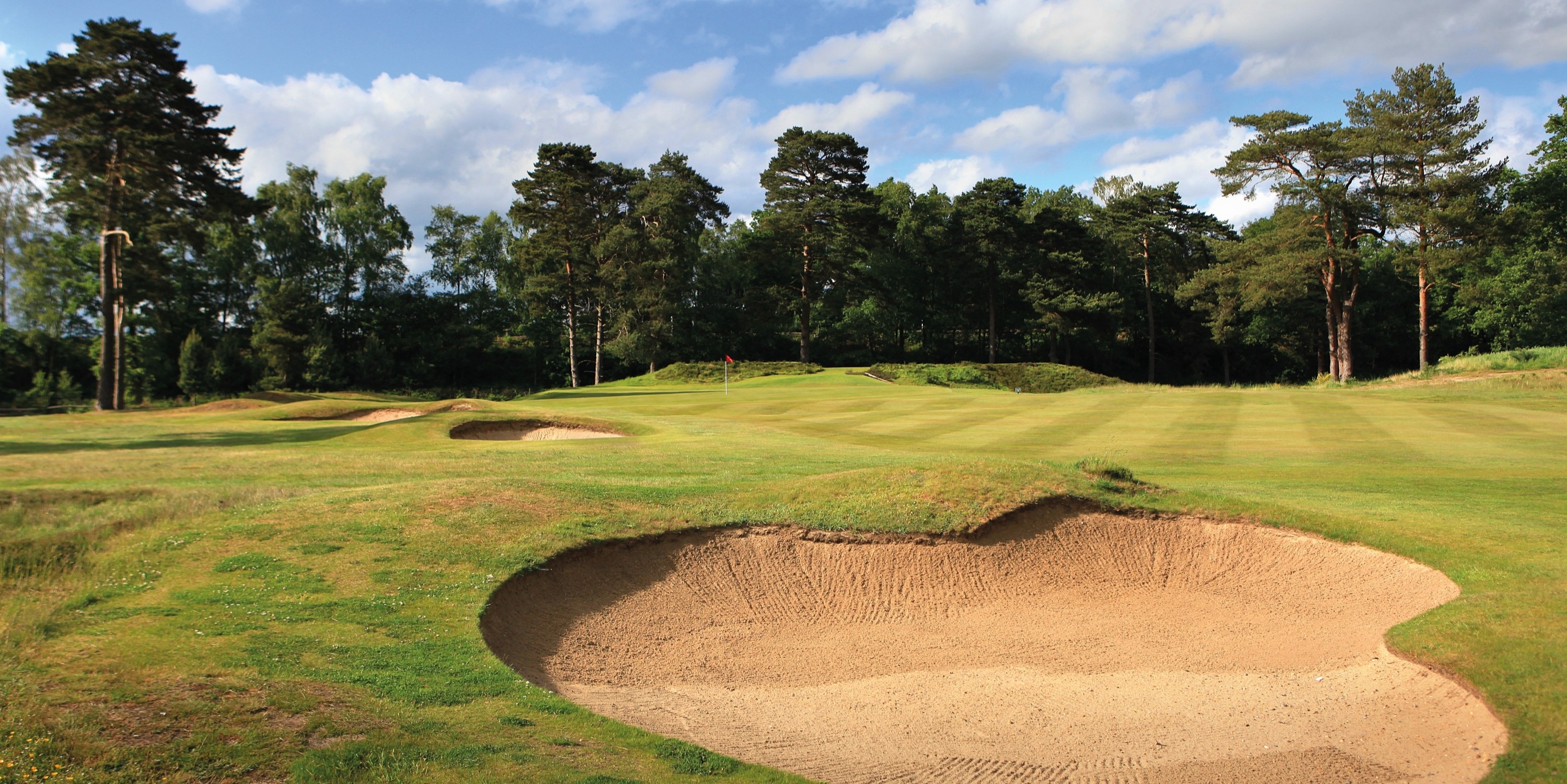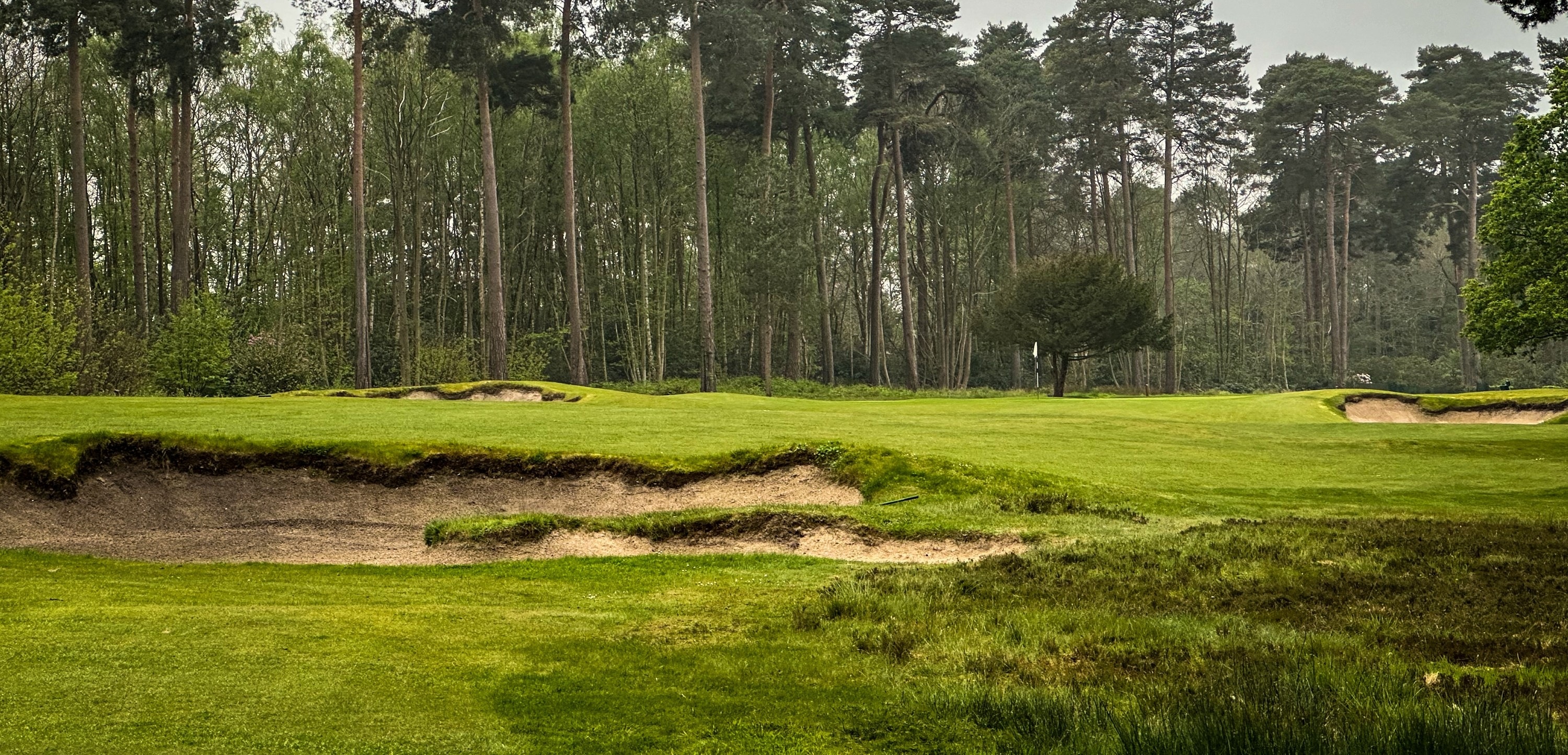
Woking
Woking | NCG Top 100s : GB & Ireland Golf Courses
Rankings
4th
28th
68th
The legendary golf writer Bernard Darwin was a member at Woking for 60 years and describes the advent of this style of course as “really golf, and not a good or even bad imitation of it”. In 1910 he wrote:
But in 1893, Tom Dunn was commissioned by a “few mad barristers trying to carve by main force out of a swamp thickly covered with gorse and heather near Woking”.
To this day, many members still work in the legal profession and, along with nearby Worplesdon and West Hill, this delightful trinity of distinguished Surrey heathland courses is known as The Three Ws.
Visit Woking's website here.
Go back to the NCG Top 100s Homepage.
Advertisement

A Brief History of Woking Golf Club
In its early years, the club enjoyed steady growth and quickly gained a reputation for its challenging course layout. The heathland terrain and natural features of the site made it an attractive destination for golfers. The original clubhouse, known as the "Pavilion," was built in 1903. This historic building has undergone several renovations and expansions over the years but still retains its classic charm.
A pivotal moment arrived in 1913 when Harry Colt, an illustrious golf course architect, undertook a comprehensive redesign of the course. His artistic touch not only endured but continues to shape the course as we know it today. Colt's vision celebrated the intrinsic beauty of the natural landscape, preserving the unique heathland characteristics while introducing strategic elements that have since become the club's hallmark.
During World War II, like many other golf clubs in the United Kingdom, the venue was used for various military purposes. After the war, it was restored and resumed its golfing activities. Throughout its history, Woking has consistently received acclaim for its course design, maintenance, and the quality of its members. It has remained a private members' club, providing an exclusive and traditional golfing experience.
Woking Golf Club Review | NCG Top 100s: GB&I Golf Courses
Advertisement

Much of this work was carried out by a single member, Stuart Paton, over a 40-year period. Most significantly, he added two small bunkers in the middle of the 4th fairway. It is thought to be the first time a hazard had been designed with strategy in mind rather than simply to punish a poor shot. At a stroke, a relatively unremarkable short par 4 was transformed. From an elevated tee, the landing area is generous and, apart from the bunkers, the only other significant problem is the London to Southampton railway line that runs down the right.
What the bunkers do is force a clear decision – whether to play aggressively down the right, close to the out of bounds and set up a simple pitch down the green; or lay up further back and to the left, taking the bunker and railway out of play but leaving a longer and more awkward approach. It seems obvious to us now, but it was met with incredulity at the time – why should a good shot down the middle of the fairway end up in a bunker?
Woking is subtle. Often, holes seem innocuous only to reveal their true difficulty nearer to or on the greens, many of which feature evil contours. The best two examples come at the 12th and 13th, where leaving yourself above the hole is to be avoided at all costs.
It is not a long course at 6,500 yards but to a par of 70 nor does it need to be. Miss out on a birdie at the generous 1st and you could be waiting a long time for another chance of picking up a shot.
The 18th is typical of its nature: although only 350 yards the famous pond to the right and a green that slopes towards it makes for an awkward finishing hole.
A thinking man’s course then, and one studied by the likes of Alister MacKenzie, Harry Colt and Herbert Fowler. There is most likely a hint of Woking at almost all of Britain’s finest inland venues.
Our Panellists Notes for 2025
Michael Verity: Quite possibly the best set of greens in the country. Old-school contouring
Sean Arble: For a friendly game on a course not overly influenced by championship golf, there are few better places. The course offers enough width to allow aggressive play, the walk is comfortable, the greens are without exception full of interest, there is an unusual variety of bunker placement and the club has an understated elegance
David Walker: Beautiful, tightly mown, springy heathland fairways lined by a mix of sand, pines and heather leading to some of the best green complexes in England. It is eminently playable for all levels
Craig Redston: Famous for a reason – the crazy, huge greens with even crazier undulations
Read more about our panellists here.
Advertisement

FAQs about Woking Golf Club
Where is Woking Golf Club located?
Woking Golf Club is, as its name suggests, just outside the town of Woking in Surrey. The likes of Guildford, Aldershot and Farnborough are also close by, while the centre of England’s capital city is around 30 miles to the northeast of the golf club. The M25 also runs close by, along with both the M3 and A3.
Woking Station is just down the road from the golf club, and operates services between London Waterloo and Portsmouth Harbour on a regular basis, along with trains to Basingstoke and Exeter St David’s as well. For international visitors, London Heathrow Airport is just 15 miles from Woking Golf Club, and provides hundred of flights daily to many countries around the world. London Gatwick Airport is also within 40 miles from Woking.
Are there any other NCG Top 100s: England venues nearby?
Woking is part of the ‘3 W’s’, a triumvirate of incredible golf courses in Surrey which are all on the NCG Top 100s: England list. West Hill and Worplesdon are the other two, both within just a couple of miles of Woking. Camberley Heath, New Zealand, St George’s Hill and Swinley Forest are among the other clubs to sit within ten miles.
What golf facilities does Woking Golf Club offer?
Woking Golf Club does not have its own driving range due to the lack of space at the club, but there are hitting nets to help you warm up. A short game area and a putting green are also on hand, along with an indoor studio that can be rented out in advance.
What are the green fees at Woking Golf Club?
The price of a green fee at Woking Golf Club changes throughout the year, depending on the season. It is also different depending on whether it is a weekday or weekend.
For more information on current green fees at Woking, visit their website here.
Website
http://www.wokinggolfclub.co.uk/Phone
+44 (0) 1483 760053Address
Pond Rd, Woking GU22 0JZCourse Reviews

0.0 | 0 reviews



